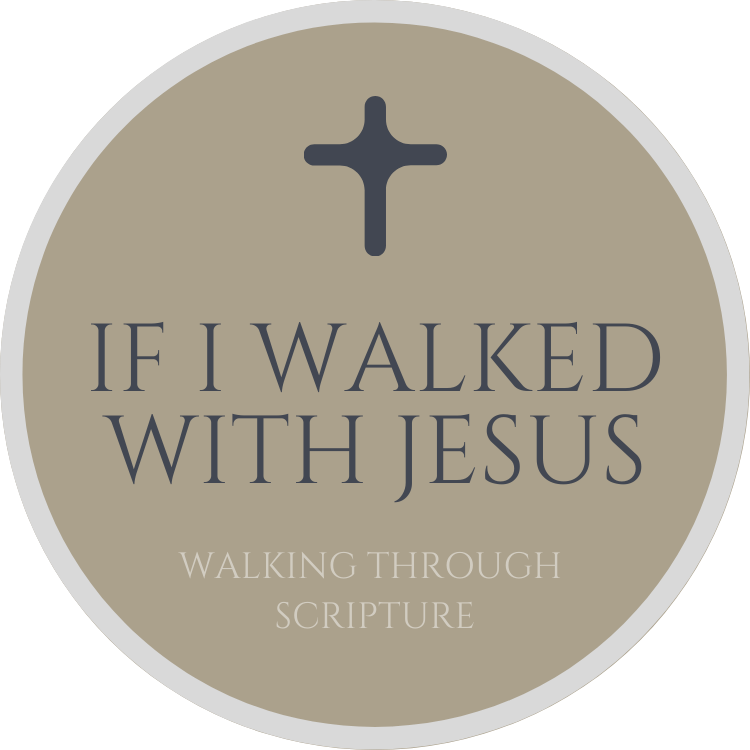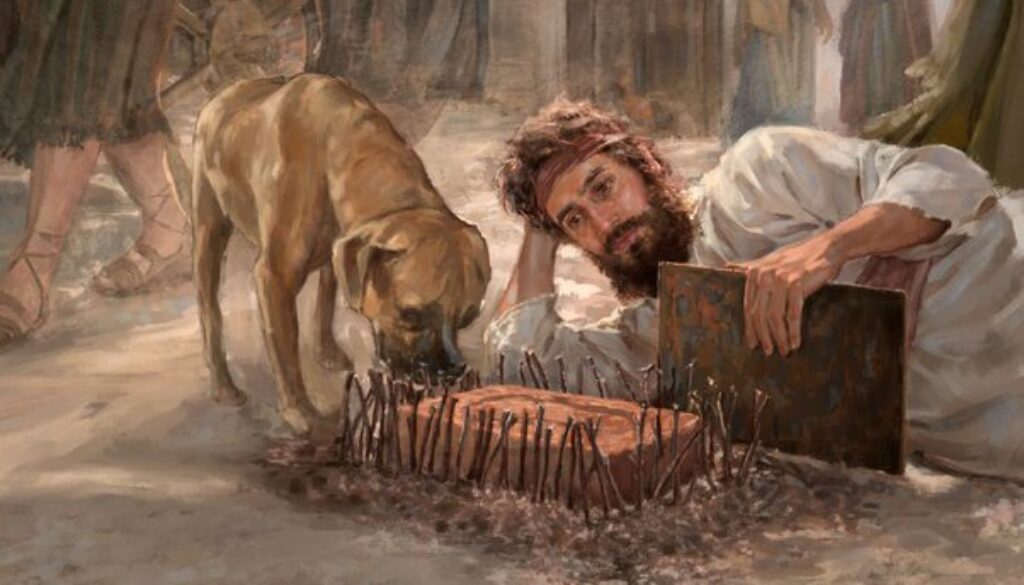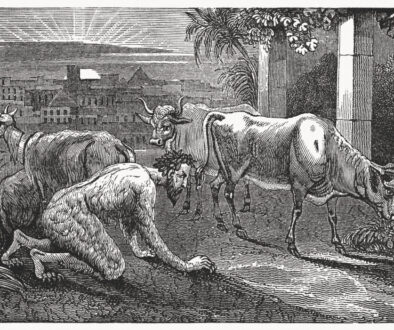Ezekiel 4:1-17 Siege Portrayed

God tells Ezekiel to give the people a visual example of the siege of Jerusalem portrayed. He built a ‘little city’ and acted out God’s message.
The first thing I though of when I began reading this passage was my Christmas village or a diorama for a school project. Ezekiel built a model of Jerusalem under siege. It was complete in all the attacker’s details but lacked MUCH in the city structure. The city was a brick with a pictorial representation of Jerusalem and the name “Jerusalem” engraved into it.
After the ‘diorama’ is set up, God tells Ezekiel to put an “iron griddle” between himself and the representation of the city. I had to look this one up. When I think of an “iron griddle” I think of the cast iron skillet I cook on. We call it a “griddle.” My bible helps tells that the griddle “was part of the priestly equipment” so I was thinking girdle then. Until I looked a little closer and followed the reference links. The griddle is something the priests use to bake the grain offering. So, it IS a pan after all. I don’t know if it is round and flat like mine but that probably isn’t the point anyway. It is an impenetrable barrier between Ezekiel, the man of God, and Jerusalem. I would represent the barrier between God and His people in Jerusalem. God was NOT going to act on their behalf. He brought the adversary against the people Himself and they were NOT getting out of this judgment/punishment until it was completed.
One quick note that I want to interject is that it sounds like Ezekiel got to move the pieces of his diorama around a bit. God told him to “let it be in a state of siege, and press the siege against it” (verse 3b). To me, “pressing the siege” means moving the pieces ever closer to simulate greater danger to the city.
The second part of our reading deals with what “completed” looks like. Being someone in the health care field, I would NOT recommend doing what Ezekiel did! Lying in one position, ANY position, for a long time causes the skin to break down and sores to develop. These sores can become life threatening. God’s hand was DEFINITELY in this process or Ezekiel wouldn’t have survived it.
For THREE HUNDRED AND NINETY DAYS Ezekiel laid on his left side facing the iron griddle that was between him and the city diorama. Regardless if this was a “common year” or a “leap year” for the Jewish calendar, Ezekiel would have lain on his left side for MORE than a full year. I was curious to see the timeframe that these 390 years represented. First, I looked at my timeline of Israel’s kings chart. I thought there would be 390 years between the fall of the northern kingdom and Judah. There wasn’t. There were 134 years between these two events. So, I went looking on line. I discovered many websites saying that the 390 years begin with the division of the Israel into two kingdoms and end with the fall of Jerusalem. That math does not track with my kings’ timeline either. I thought about adding the 70 years to include the time in captivity but that still leaves me with math issues. Adding the 70 years in puts it at 405.
I wondered if there was an issue with the Jewish calendar and the Gregorian calendar matching up. I looked for Jewish sites that gave a timeline for this period in history. I found one that proposed different dates and gave their reason for it. The site torahtimes.org gives us a different start date for the division of the two kingdoms. Using their date, from the division to the fall of Jerusalem is 396 years. That gets us closer but not an exact number. The torahtimes.org gives us their timeline and rational for it. I don’t know enough Jewish history to agree or disagree with their interpretation. What I DO know is that God said 390 years for Israel and 40 years for Judah. I trust HIM to know which days He is speaking about and counting. After all, HE was the one who was disrespected by His own people.
We are given a little bit of a peak into Ezekiel’s life during the time he spent on his sides. Our window into that time is confined to what he ate and drank, with ONE caveat into how he maintained his position. I don’t THINK God would have Ezekiel maintain this position on a 24/7 schedule. His skin would break down, his muscles would atrophy, he would be filthy with his own excrement, and he wouldn’t be able to prepare and eat his meals.
While IN the position, God said that He would “place cords upon you, so that you cannot turn from one side to the other, till you have completed the days of your siege” (verse 8). God KEPT Ezekiel still and in position, however long he lay there each day. Personally, I move around a LOT, even in my sleep. My dogs often hold me down but I always manage to wiggle my way to freedom when necessary. However, it is NOT beyond the realm of possibilities from God that He miraculously dealt with all these issues for Ezekiel. And, again, the important fact in this matter is that Ezekiel followed God’s instructions TO THE LETTER.
During ALL the days of Ezekiel’s ‘confinement’, God gave him a specific diet he was to follow. “And you, take wheat and barley, beans and lentils, millet and emmer and put them into a single vessel and make your bread from them” (verse 9a). Ezekiel was allowed 20 shekels, by weight, of this mixture a day to make ‘bread’ to eat. According to the Institute for Creation Research, this would be about a ½ pound of food a day. NOT a meal, but a day. A sixth part of a hin is 2/3 of a quart. This was his daily water ration. His total intake for each day was SMALL compared to American’s standards; 8 ounces of food and 21 ounces of water. It is probably small compared to anywhere where the people are not starving. But this was also about the amount of food and water being consumed daily by each person in Jerusalem while it was under siege.
In ALL that God told Ezekiel to do, he protested only ONCE. That protest wasn’t about how tired or bored he would be. It wasn’t about the taste or amount of food and water. It was about HOW the food would be prepared. Ezekiel obeyed God’s Laws to the VERY BEST of his abilities. When God told him to cook his meager daily portion over human dung, Ezekiel drew the line. “Ah, Lord God! Behold, I have NEVER defiled myself. From my youth up till now I have never eaten what died of itself or was torn by beasts, nor has tainted meat come into my mouth” (verse 14, emphasis added). Ezekiel could not bring himself to eat what he knew to be in violation of God’s Laws.
God listened to Ezekiel’s concerns and made allowances for him. He let Ezekiel use cow dung, which was perfectly acceptable as fuel for a fire, to cook his meals. This concession would NOT be made for those who were actually in Jerusalem under siege. They would end up using their own dung for fuel as well as eating the flesh of their own people when all other sources of food were exhausted.
I wonder what the people who watched Ezekiel every day thought of his ‘street theatre’. Did he become ‘part of the landscape’ for them so that he became invisible after a while? Did they count the days with him or for him? Did they know the number of days this would last? Were they surprised when he changed sides? Did people ridicule him? Did children taunt and tease him? Did people mess with his diorama? Was there an obvious presence of God on him while he carried out this task from the Lord that kept the people at bay?
Did Ezekiel say a single word to them? God had bound his tongue and he was to be mute unless God told him exactly what to say. God did tell him to prophesy against the city of Jerusalem and to have his arm bared, maybe in a position to strike the city.
As God told him earlier, it wasn’t Ezekiel’s job to be sure the people listened to him. It was simply his job to do as God instructed him. The rest was on the shoulders of the God to manage.
Father God, I’m SO glad You haven’t asked me to do something like this. I would go nuts being still for so long! There is a limit to the number of naps I can take in a day. I would do whatever YOU call me to do though. And I trust You to prepare my heart for it beforehand for whatever work You have for me.



